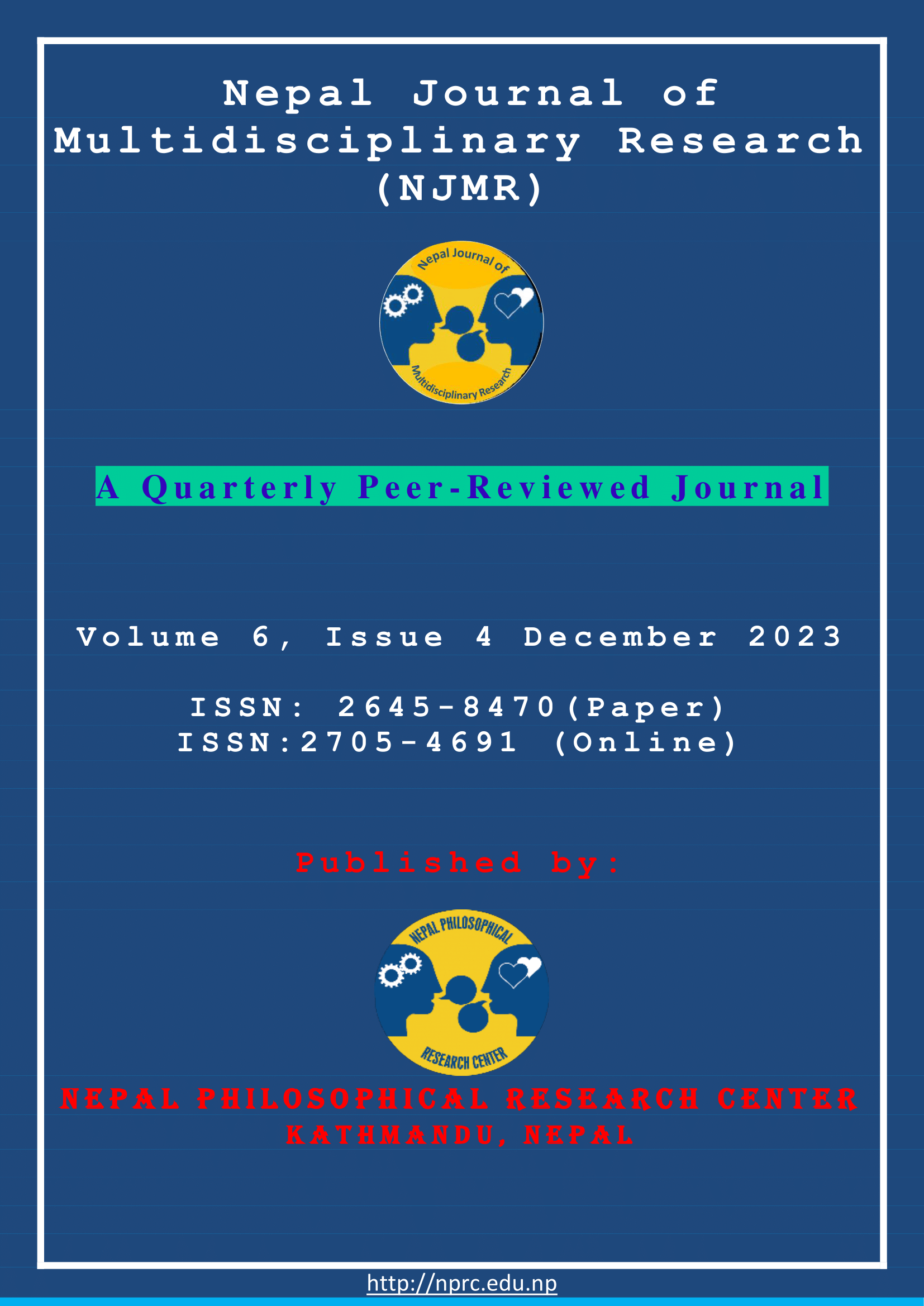Comprehensive Analysis of Land Use and Land Cover Shifts from A Redd Perspective: A Case Study of Banepa Municipality, Nepal
DOI:
https://doi.org/10.3126/njmr.v6i4.62046Keywords:
deforestation, spatial, land use, land cover, urbanization, remote sensingAbstract
This paper examines the dynamic changes in land use and cover in Banepa Municipality over three decades, from 1991 to 2021, using the remote sensing method within the REDD perspective. It uncovers an 11% surge in built-up areas and a 5% decline in forest cover, with minimal agricultural fluctuations (1%) and a substantial 7% decrease in barren land. Urgent concerns about ecological balance prompt a call for immediate REDD implementation.
To address these issues, the study advocates for employing monitoring methods, including remote sensing, to evaluate forest and land resources. This data can inform comprehensive studies on the drivers of deforestation and forest degradation, alongside feasibility and sectorial analyses, including cost-benefit assessments for effective land-use planning. The conclusion stresses the imperative need for planned urban development in Banepa to preserve open spaces, forests, and agriculture. This study provides vital insights into the intricate relationship between land-use changes and climate impact, emphasizing the urgency of sustainable development actions.
Downloads
Downloads
Published
How to Cite
Issue
Section
License
Copyright (c) 2023 Sujan Ghimire, Hemanta Poudel, Sharad Upadhyaya, Binod Kumar Adhikari

This work is licensed under a Creative Commons Attribution-NonCommercial 4.0 International License.
This license enables reusers to distribute, remix, adapt, and build upon the material in any medium or format for noncommercial purposes only, and only so long as attribution is given to the creator.




